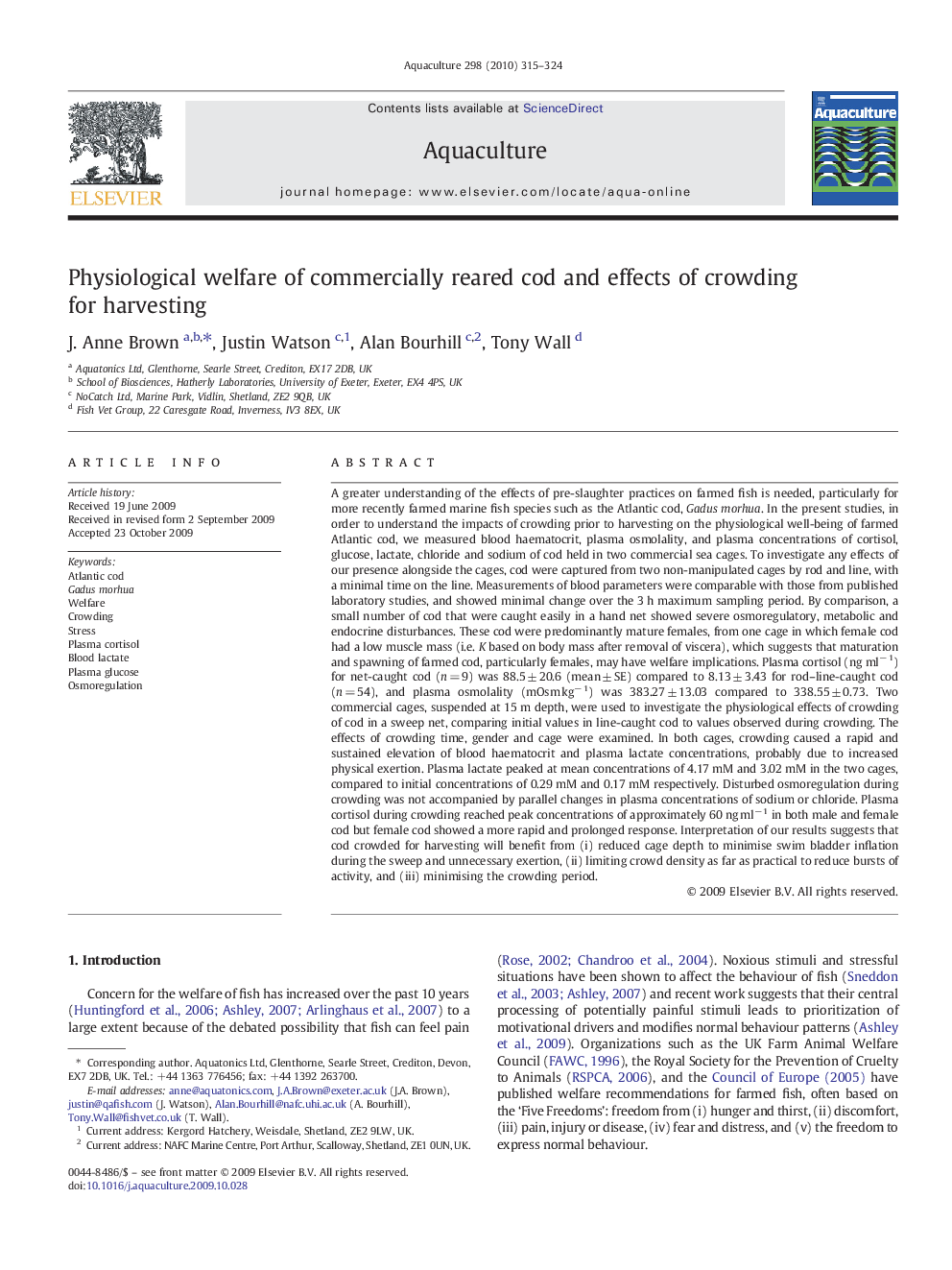| Article ID | Journal | Published Year | Pages | File Type |
|---|---|---|---|---|
| 2423918 | Aquaculture | 2010 | 10 Pages |
A greater understanding of the effects of pre-slaughter practices on farmed fish is needed, particularly for more recently farmed marine fish species such as the Atlantic cod, Gadus morhua. In the present studies, in order to understand the impacts of crowding prior to harvesting on the physiological well-being of farmed Atlantic cod, we measured blood haematocrit, plasma osmolality, and plasma concentrations of cortisol, glucose, lactate, chloride and sodium of cod held in two commercial sea cages. To investigate any effects of our presence alongside the cages, cod were captured from two non-manipulated cages by rod and line, with a minimal time on the line. Measurements of blood parameters were comparable with those from published laboratory studies, and showed minimal change over the 3 h maximum sampling period. By comparison, a small number of cod that were caught easily in a hand net showed severe osmoregulatory, metabolic and endocrine disturbances. These cod were predominantly mature females, from one cage in which female cod had a low muscle mass (i.e. K based on body mass after removal of viscera), which suggests that maturation and spawning of farmed cod, particularly females, may have welfare implications. Plasma cortisol (ng ml− 1) for net-caught cod (n = 9) was 88.5 ± 20.6 (mean ± SE) compared to 8.13 ± 3.43 for rod–line-caught cod (n = 54), and plasma osmolality (mOsm kg− 1) was 383.27 ± 13.03 compared to 338.55 ± 0.73. Two commercial cages, suspended at 15 m depth, were used to investigate the physiological effects of crowding of cod in a sweep net, comparing initial values in line-caught cod to values observed during crowding. The effects of crowding time, gender and cage were examined. In both cages, crowding caused a rapid and sustained elevation of blood haematocrit and plasma lactate concentrations, probably due to increased physical exertion. Plasma lactate peaked at mean concentrations of 4.17 mM and 3.02 mM in the two cages, compared to initial concentrations of 0.29 mM and 0.17 mM respectively. Disturbed osmoregulation during crowding was not accompanied by parallel changes in plasma concentrations of sodium or chloride. Plasma cortisol during crowding reached peak concentrations of approximately 60 ng ml− 1 in both male and female cod but female cod showed a more rapid and prolonged response. Interpretation of our results suggests that cod crowded for harvesting will benefit from (i) reduced cage depth to minimise swim bladder inflation during the sweep and unnecessary exertion, (ii) limiting crowd density as far as practical to reduce bursts of activity, and (iii) minimising the crowding period.
